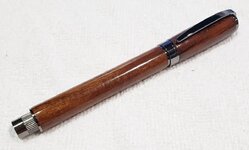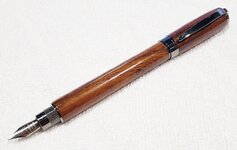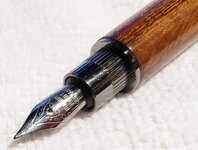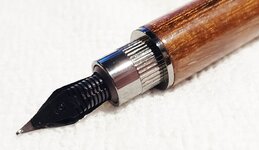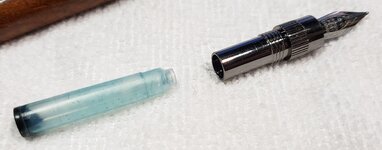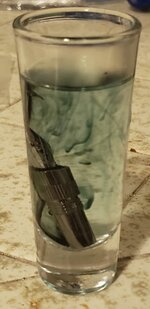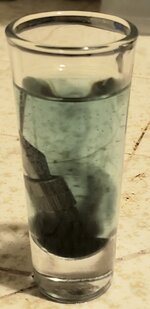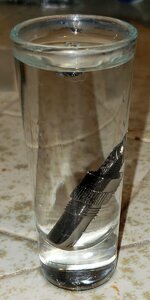You probably should soak/flush the section and nib to remove any dried ink left in it.
Referring to your photo mag_grad_09.jpg, the section/nib is the black component on the right. Drop it in a small glass of warm water, and just let it soak.
Periodically, dump the water and replace it with clear, warm water. Adding a drop or two of dishwashing liquid is OK for the first couple of soak cycles, but you should end the process in plain water. Some people believe that adding a bit of household ammonia or hypochlorite bleach in the initial soak will speed the process, but you can usually accomplish the same objective by using a longer soak. The key is to go through several soaking cycles, with the last few in plain water. Usually, an hour or two of soaking in plain water is sufficient. When the soak water no longer changes color, the job is done.
Incidentally, the nib and feed may retain some evidence of the previous ink, and this can be disconcerting if you are changing ink color, but practically its not an issue. There are some inks (typically not available in cartridges) that cause persistent stain on both plastic and metal components that can be addressed by adding some ordinary hypochlorite bleach (ie, Chlorox) to the initial soak solution. Just never mix bleach and ammonia together!
After soaking the nib, shake it to remove any trapped water, insert a new cartridge, and enjoy your pen. It may take a few minutes for ink to start flowing, and it may appear a bit diluted initially because of water that remains trapped inside the feed, but that will correct itself after a few minutes of writing.

